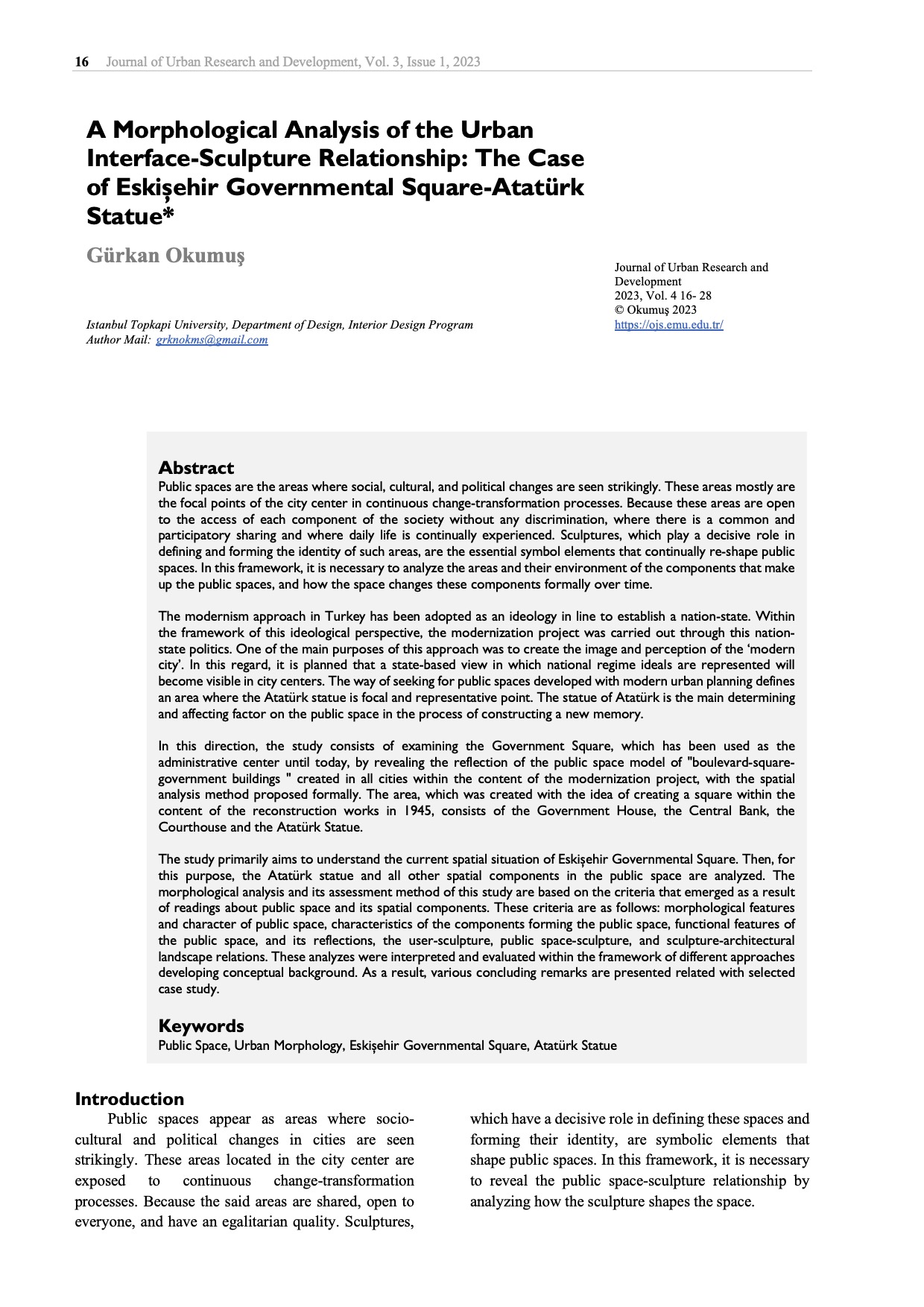A Morphological Analysis of the Urban Interface-Sculpture Relationship
The Case of Eskişehir Governmental Square-Atatürk Statue
Keywords:
Public Space, Urban Morphology, Eskişehir Governmental Square, Atatürk StatueAbstract
Public spaces are the areas where social, cultural, and political changes are seen strikingly. These areas mostly are the focal points of the city center in continuous change-transformation processes. Because these areas are open to the access of each component of the society without any discrimination, where there is a common and participatory sharing and where daily life is continually experienced. Sculptures, which play a decisive role in defining and forming the identity of such areas, are the essential symbol elements that continually re-shape public spaces. In this framework, it is necessary to analyze the areas and their environment of the components that make up the public spaces, and how the space changes these components formally over time.
The modernism approach in Turkey has been adopted as an ideology in line to establish a nation-state. Within the framework of this ideological perspective, the modernization project was carried out through this nation- state politics. One of the main purposes of this approach was to create the image and perception of the ‘modern city’. In this regard, it is planned that a state-based view in which national regime ideals are represented will become visible in city centers. The way of seeking for public spaces developed with modern urban planning defines an area where the Atatürk statue is focal and representative point. The statue of Atatürk is the main determining and affecting factor on the public space in the process of constructing a new memory.
In this direction, the study consists of examining the Government Square, which has been used as the administrative center until today, by revealing the reflection of the public space model of "boulevard-square- government buildings " created in all cities within the content of the modernization project, with the spatial analysis method proposed formally. The area, which was created with the idea of creating a square within the content of the reconstruction works in 1945, consists of the Government House, the Central Bank, the Courthouse and the Atatürk Statue.
The study primarily aims to understand the current spatial situation of Eskişehir Governmental Square. Then, for this purpose, the Atatürk statue and all other spatial components in the public space are analyzed. The morphological analysis and its assessment method of this study are based on the criteria that emerged as a result of readings about public space and its spatial components. These criteria are as follows: morphological features and character of public space, characteristics of the components forming the public space, functional features of the public space, and its reflections, the user-sculpture, public space-sculpture, and sculpture-architectural landscape relations. These analyzes were interpreted and evaluated within the framework of different approaches developing conceptual background. As a result, various concluding remarks are presented related with selected case study.


